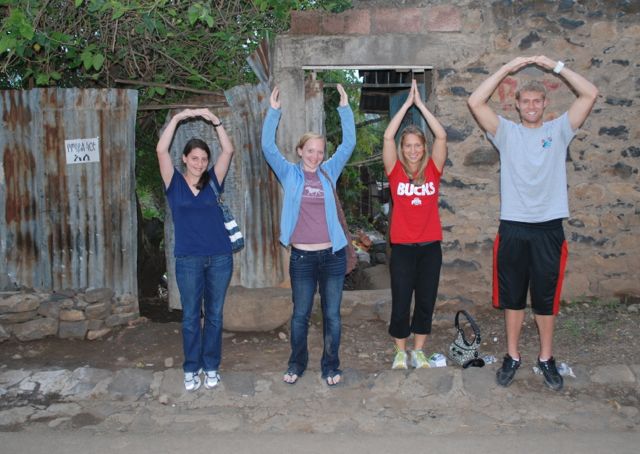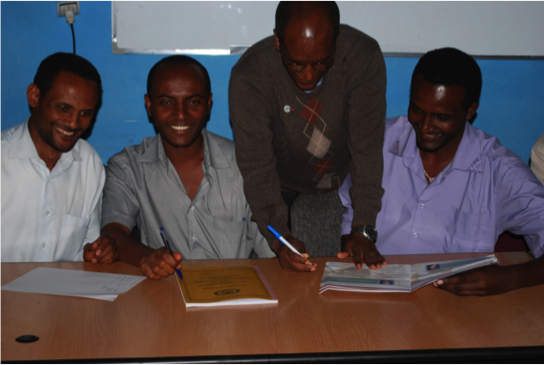
From left to right: Ohio State’s Baye Molla and Tim Landers along with University of Gondar’s Wubet Birhan, head, School of Biomedical and Laboratory Sciences; Kassie Molla, head, microbiology laboratory; and Tigist Feleke, lab technologist
By Bayleyegn Molla, DVM, PhD
College of Veterinary Medicine, The Ohio State University
This week, I had a chance to tour the microbiology at the University of Gondar Hospital.
The lab processes hundreds of samples from patients every month. Patient samples are accepted, labeled and sent on to the microbiology lab where they are placed in different agars and broths to check for the growth of bacteria in patient samples.
I was surprised when the staff showed us a large book where the date, source, and patient information are recorded. This can be a time consuming task and makes it difficult to transmit results efficiently to clinicians. Papers can be torn, lost, or burned.
It is a less than ideal system.
When I asked to see the computer, they happily showed us the new electronic system to track individual results including results, name of the organism recovered, and information about antibiotic resistance for each organism. Having this system allows more rapid feedback to clinic staff and can be used to research problems in microbiology.
I was relieved and encouraged that they were using this technology.
This made me reflect on how I still rely on older systems in my old work. They are comfortable for us to use. In order to really harness technology to address important health and food safety problems, I also need to help develop effective technology, trust it to perform, and use it to its maximum.
That is what I learned in the microbiology lab.

